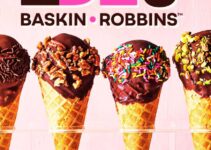Swot analysis of Red Bull. Red Bull GmbH is a soft energy Drink Company. Chaleo Yoovidhya and Dietrich Mateschitz are the founders of the company, and they laid the foundation of the company in 1987. The headquarter of the company is in Fuschl am See, Salzburg, Austria.
Red Bull’s main products and services are;
- Arts,
- Automobile Assembly Line,
- Sports,
- Red Bull Energy Drinks.
- Red bull Cola
- Energy shots
- Sugar-free drinks
Chalem Yoovidhya and Dietrich Mateschitz hold 51% and 49% shares in the company. The energy drink brand has employed roundabout 12,239 employees to manage its various operations.
According to an estimate, the group annual sale of Red Bull in 2021 was 7.816 billion Euros, and it has increased comparatively. The brand sold approximately 11.582 billion cans in 2022. The company has employed 13,610 employees to manage its worldwide operations.
Red Bull’s top competitors are;
- Kraft Heinz,
- Mondelez International,
- Pepsi,
- DPS,
- Rockstar Energy Drink,
- Canard Street,
- Coca Cola,
- Monster Beverage,
- Heineken, Nestle,
- Unilever.
Today, we’ll discuss the swot analysis of Red Bull. It’s going to analyze the internal and external factors impacting the world’s leading energy drink brand. Here’s the swot analysis of Red Bull as follows;
Strengths of Red Bull
Product Portfolio
Red Bull has a well-diversified product portfolio. It ranges from energy drinks, arts, car assembly, auto manufacturing, Esports, and air racing to car racing. However, the energy drink remains the main source of the company’s income.
Youthful Image
Red Bull has created and nurtured a youthful brand image, and the company has exploited every opportunity to develop a connection between the brand and youthful activity across the world. It paid off well in terms of becoming the world’s largest energy drink brand.
Supply Chain
Red Bull has established a very efficient supply chain and distribution system with a team of reliable suppliers and dedicated distributors. They make sure that the company has sufficient supplies to produce the final product, and that the retailers have enough stock on the stores’ shelves to meet the demand.
Catchy Slogan
Ever since the foundation of the company, Red Bull has always maintained the slogan “Gives you Wings.” It’s memorable and catchy and it has provided the company with a unique brand image.
Global Brand
According to an estimate, Red Bull is selling energy drinks in over 171 countries across the globe. The company’s energy drink market ranges from Australia, Asia, Africa, Europe, and America. However, the global presence in various markets helps the company to stabilize its growth and earning.
Marketing
Red Bull is highly active in its marketing and promotional campaigns on different social media platforms like Facebook, Instagram, Twitter, LinkedIn, TikTok, and others.
The company has sponsored many athletes and sports celebrities over the years. Along with sports celebrities’ sponsorship, Red Bull has also sponsored many international sports events like skateboarding, free-ride mountain biking, downhill, flying, skiing, BMX, cliff diving, Air Race World Championship, DARPA Grand Challenges, and many others.
Growth
According to an estimate, Red Bull has sold more than 7.9 billion cans in 2020. The company’s energy drink markets are; 10% in the US, 11% in Switzerland, 11% in Scandinavia, 14% in Canada, 16% in Russia, 19% in Germany, and 23% in Turkey.
Market Share
According to an estimate, the market share of Red Bull in 2020 was 43% in the energy drinks market. Monster comes in the 2nd position with a market share of 39%. The dominant market share of the brand proves the strengths of the company
Brand Value
According to an estimate by Forbes, Red Bull ranked at the 69th position of the World’s Most Valuable Brand in 2020. The company also has an extraordinary working environment. In fact, the energy drink company ranked at the 228th position of World’s Best Employer in 2020.
Weaknesses of Red Bull
Patent Issues
Red Bull isn’t the founder of the energy drink recipe and right ingredient mixture. That’s why it’s difficult for the company to have patents. Other companies could develop a similar type of energy drink and compete in the market.
Krating Daeng also has the brand name license of Red Bull and the Chaleon family owns 51% shares in the company “Red Bull GmbH.” In other words, both companies are using the same brand name to sell products but in different markets and regions.
Expensive
Red Bull has established a reputation of being a premium drink with a high price. Many people from the middle/lower class find it difficult to afford energy drinks. Therefore, it presents a severe threat to the company of losing a great portion of the price-conscious customer market.
High Sugar
The consumers market especially Gen Z and millennials are very cautious about their health and diet. They say no to sugary and oily products. However, the energy drink “Red Bull” falls under the category of highly sugary unhealthy drinks. In fact, the company hasn’t changed the ingredients in its drink which doesn’t look good for the future of the company.
Low Variety
It doesn’t, however, good your product is, customers always want a variety of products. But the company offers only two types of drinks; high-sugar and sugar-free energy drink. It limits the company to target a variety of customers.
Opportunities available to Red Bull
Product Line
Red Bull should consider adding products like sweets, snacks, fruit beverages, iced tea, and many others in its portfolio. The portfolio expansion would allow the company to target different types of customer markets.
Sports
As we know that Red Bull is playing an active role in sports and sponsoring many events. The brand should expand its role in the sports business by establishing Red Bull Racing as the best in F1.
Healthy Drink
Red Bull should invest more resources in the research and development of healthy energy drinks. It would help the company to target the health-conscious consumer market.
Developing Markets
It’s no doubt that Europe and the USA are the main energy drink markets of Red Bull. But they’ve become saturated in recent years by the entry of many drink brands. Now the energy drink company should shift its focus to Latin American, African, and Asian markets by offering a low-price energy drink to target price-conscious customers.
Threats Red Bull has to face
Increasing Cost
The cost of raw materials and ingredients has been increasing, and it increased the overall operational cost. That’s why it has become difficult for the energy drink company to remain profitable without increasing the retail price.
Global Economic Crisis
The global economic crisis has limited many social gathering activities. Those gatherings promote the consumption of energy drinks. Limited social activities and lower purchasing power has impacted the sale of the company.
Competitors
The energy drink market has become very competitive in recent years. Many small companies have entered the competition and they’re offering the same energy product at a lower price. Their growth in market share would decrease the company’s profitability.
Healthy Trends
Caffeine, sugar, and concentrated flavor are the main ingredients of energy drinks, and they’re parts of an unhealthy diet. However, the healthy diet trends pose a severe threat to the sale of Red Bull’s drinks. Nowadays, many people prefer milk, juice, and water over cold and energy drinks. This puts the revenue of the company in great jeopardy.
Counterfeit
Many small manufacturers in developing countries are producing counterfeit drinks and selling them in the market under the logo of Red Bull. Their taste is to some extent similar, but customers don’t notice it much. Counterfeit drinks are also the main threat to the company.
Regulations
The healthy diet and healthy lifestyle trends are influencing government legislators to pass laws about healthier diets. The implementation of any such regulations would threaten the business of Red Bull.
Conclusion: Red Bull Swot Analysis Example Company
After an in-depth study of the swot analysis of Red Bull, we’ve realized that Red Bull is indeed the world’s leading energy drink company. Counterfeit drinks, competitors, economic recession, healthy diet trends, and patent issues are some of the main challenges. Red Bull should expand its portfolio and offer low pricy healthy drinks in order to address these issues; while keeping in mind the internal strengths weaknesses; external opportunities threats of energy drink swot analysis example company.

Ahsan Ali Shaw is an accomplished Business Writer, Analyst, and Public Speaker. Other than that, he’s a fun loving person.


